#TWKatHome Activity: Growing Lettuce and Salad Bases
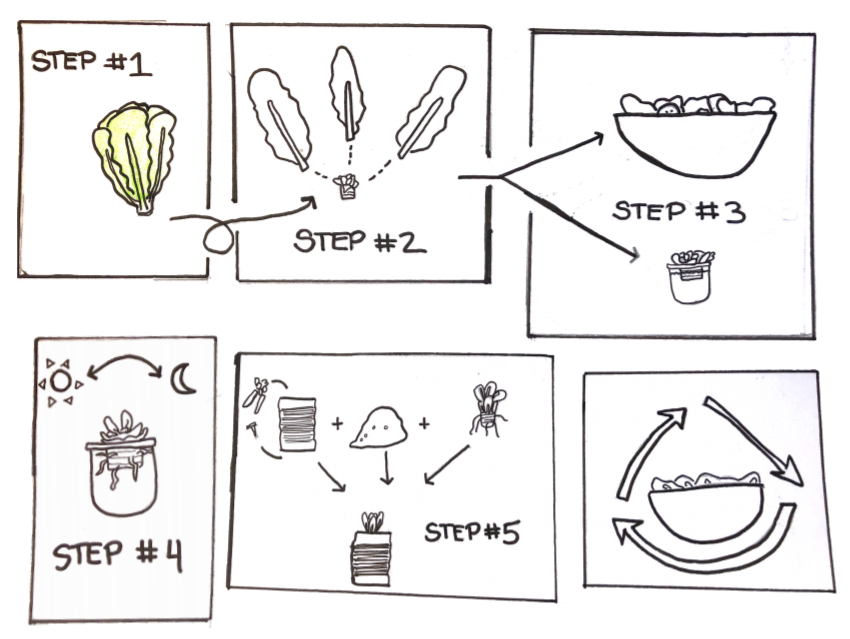
Tuesday, May 12, 2020
We are excited to have you back with us – today we are shifting our focus to all things green and exploring salad in new ways (don’t worry if you are not a salad lover, we still have things for you!). If you missed the past few weeks, check out our entire #TWKatHome series here.
Connect with Us
This week we have Chef Kiah Gibian, chef and owner of Wilde Thyme food truck, as our expert – she also created the DIY lettuce activity for you below. We invite you to ask her a question or share a picture of the planting you create!
Post or send us your question or a picture of your planting on Facebook (@TasteWiseKids) or Instagram (@tastewise_kids) and use the hashtags #TWKatHome and #myTWKsalad, or email wjeffries@tastewisekids.org to share.
This week’s theme: Salad Bases
May is National Salad month – which we like to celebrate here at TasteWise Kids! The warmer weather also makes us start to crave foods that don’t have to be cooked.
We are going to focus this week on the base of salads – whether it is lettuce, another green or something completely different (who doesn’t love a good pasta or chicken salad!).
Want more on salads? Stay tuned throughout the month (sign up for emails directly here) as well as on Instagram and Facebook as we share a fun variety of salad tips, recipes and resources.
Ok TasteWise Kids – are you hungry for some learning?
Learn from an Expert: Chef Kiah Gibian of Wilde Thyme on Salad Bases and Growing Lettuce
Let’s start off with the salad base most often used – lettuce. Did you know that:
- Salad greens originated from the Mediterranean basin around 79 A.D., when they found them on paintings of ancient Egyptian tombs.
- Lettuce was one of the first vegetables brought to the new world by Columbus, probably on his second voyage.
- There are hundreds of varieties of lettuce, which belong to the sunflower family. Romaine, red and green leaf, butterhead, spinach, mustard, arugula, bib, and iceberg lettuce are all different types of salad greens.
- Most lettuce greens are very nutritious. Two handfuls of green leaf lettuce contain a high source of Vitamins A, C, and K.
- Americans eat about 30 pounds of lettuce each year.
Need more ideas to get you started? Check out our #TWKatHome Activity – Making a Salad for ideas – a quick internet search is also a great source of inspiration!
You don’t even need to have a specific base to your salad. Think about a fruit salad – it’s just cut up fruit. You can do the same with veggies – cut up a variety of vegetables and add dressing. Or use a few kinds of beans as the “base”. Or think about salsa – it’s really a salad in itself. Experiment with making different salsas (ever add in mango? Or corn?)
Activity: Grow your own Lettuce
Chef Kiah Gibian, chef and owner of Wilde Thyme Food truck, is a huge lover of salads. She loves to eat greens in all sorts of different ways. One of her favorite ways to eat salad is for breakfast! She loves to start her day with something savory, but you can eat this Breakfast Salad for lunch or dinner too. You can make this salad lots of different ways, mixing in your favorite salad ingredients, the best part is adding a fried egg on top! Start with fresh greens as the base, add some sautéed sweet potatoes and onions, maybe some cheese or bacon if you eat that, any other fresh vegetables you might have (shredded carrot or tomato), adding a fried egg on top, and poof! You have breakfast in a salad! One of her secrets to making it taste so good is using fresh and local ingredients.
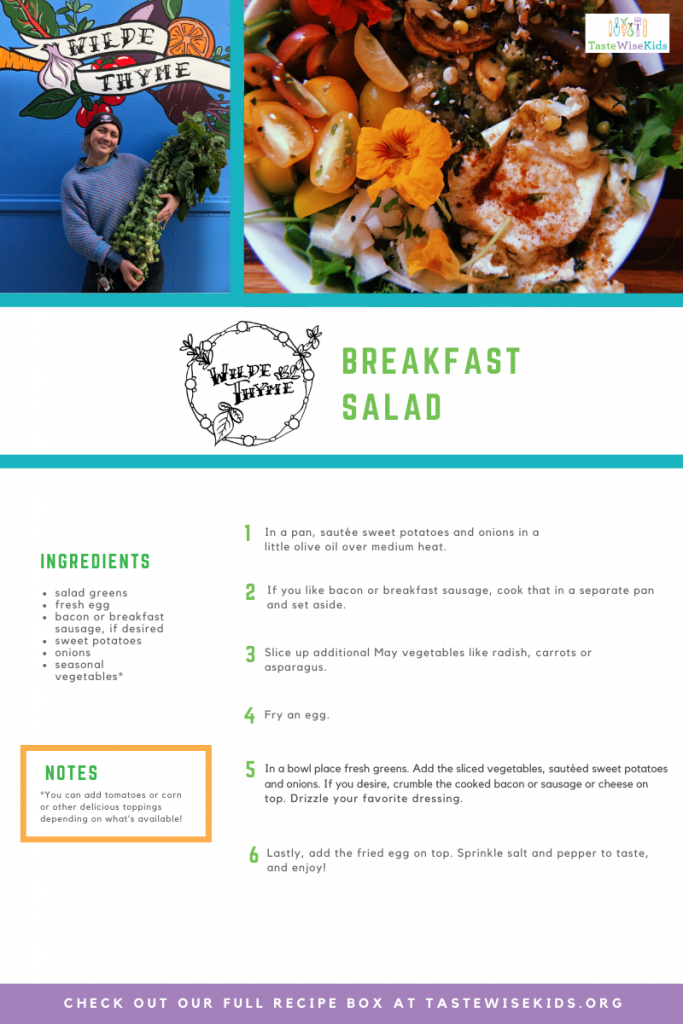
Today Kiah is also showing us a very simple and cool way to grow your own lettuce. All you need are 2-3 things:
- Head of lettuce (don’t have lettuce? That’s ok, you can use other vegetables like celery or a spring onion)
- Soil or water
- A cup or small container
To do the activity, follow the directions in our How to grow new plants from scrap food sheet (printable). Make sure to check out the bonus activities she included, such as – what to do if you don’t have soil.
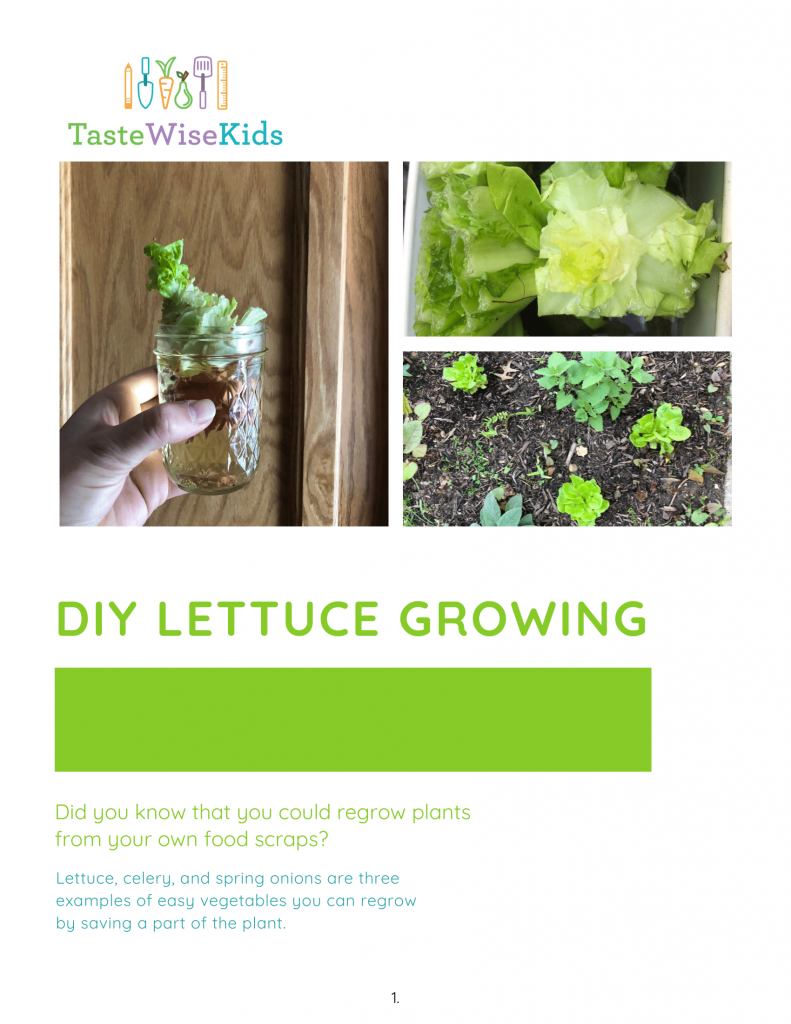
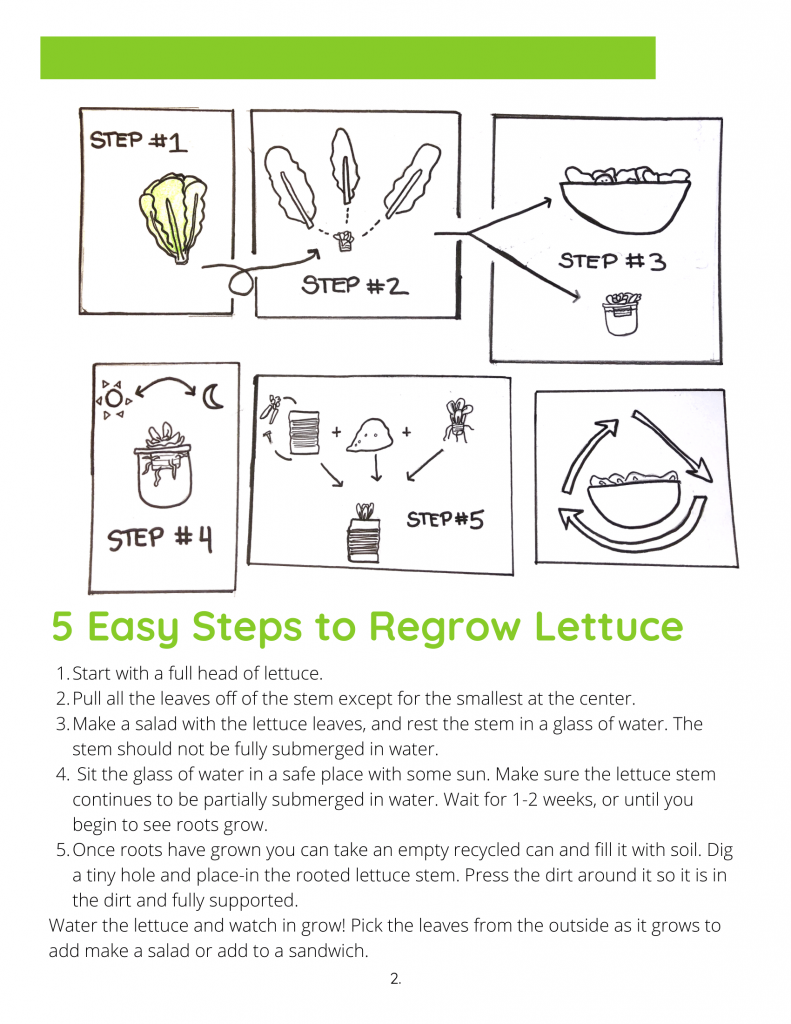
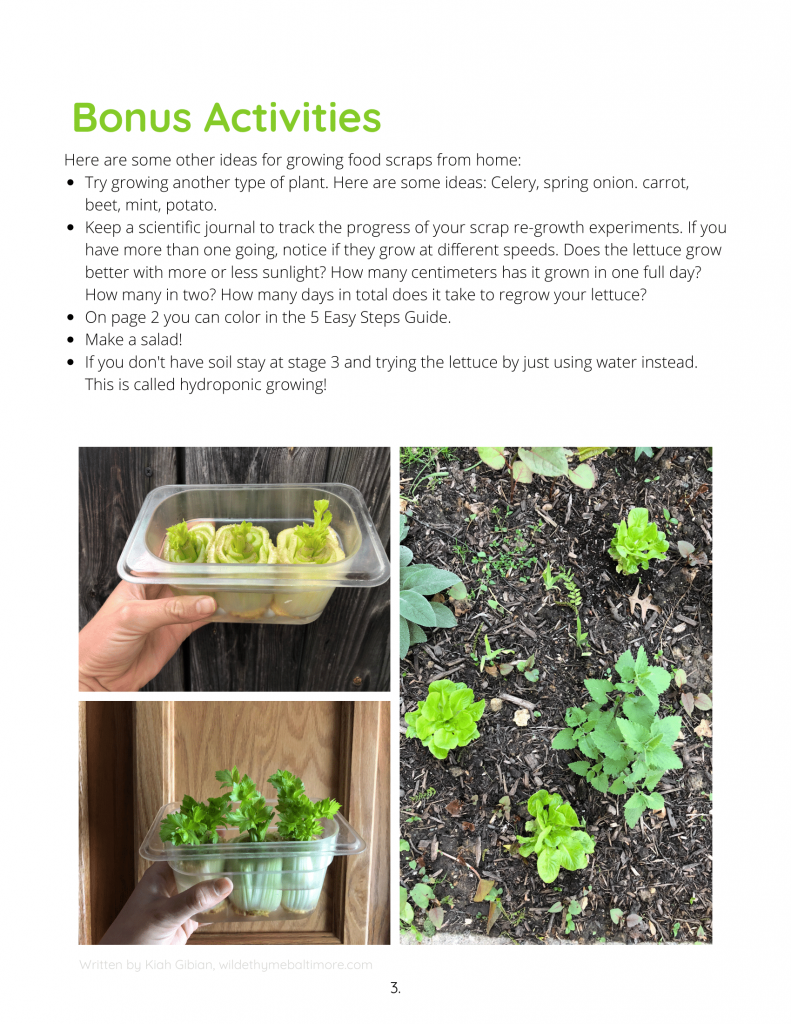
Debrief/Key Points
- Growing your own lettuce is very easy and doesn’t even need soil!
- Some foods can be grown from food scraps instead of from seeds
Don’t forget to share with us!
Post or send us your question or a picture of your DIY lettuce on Facebook (@TasteWiseKids) or Instagram (@tastewise_kids) and use the hashtags #TWKatHome and #myTWKsalad, or email wjefffries@tastewisekids.org.
Want to keep learning?
- Want to impress others with some lettuce facts and history? Check this out.
- Explore compost with this interactive game.
- Learn more about container gardens by an urban gardener stuck at home.
- If you are thinking about doing some more planting this spring, this helpful resource from UMD Extension tells you when its best to plant specific crops.
- Test your knowledge of different kinds of pasta shapes before adding them to our next salad.
Up Next
- #TWKFamilyFridays – check our Tasting Notes blog, Instagram and Facebook this Friday – we will be sharing a great resource to help with meal planning and stocking up your pantry.
